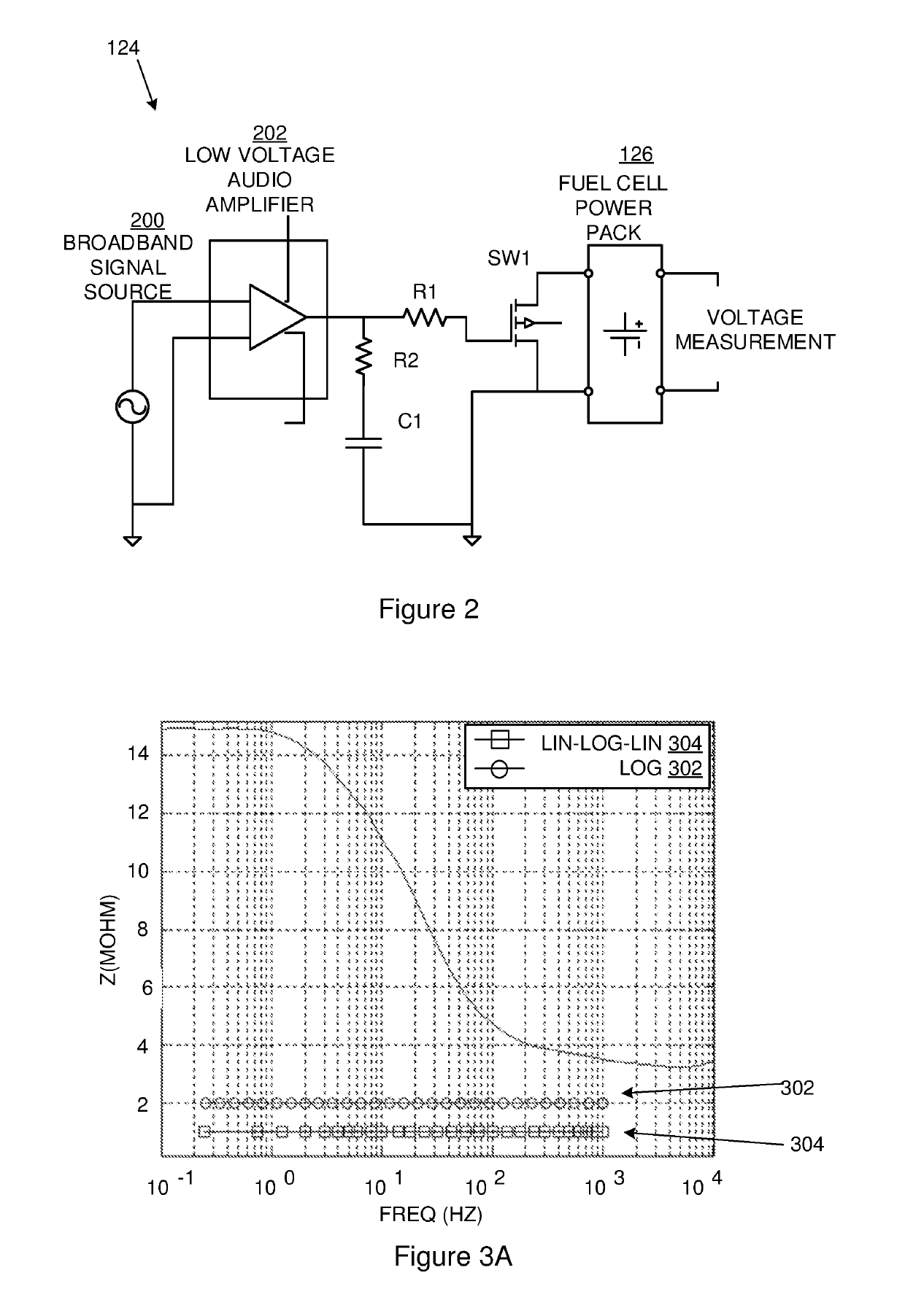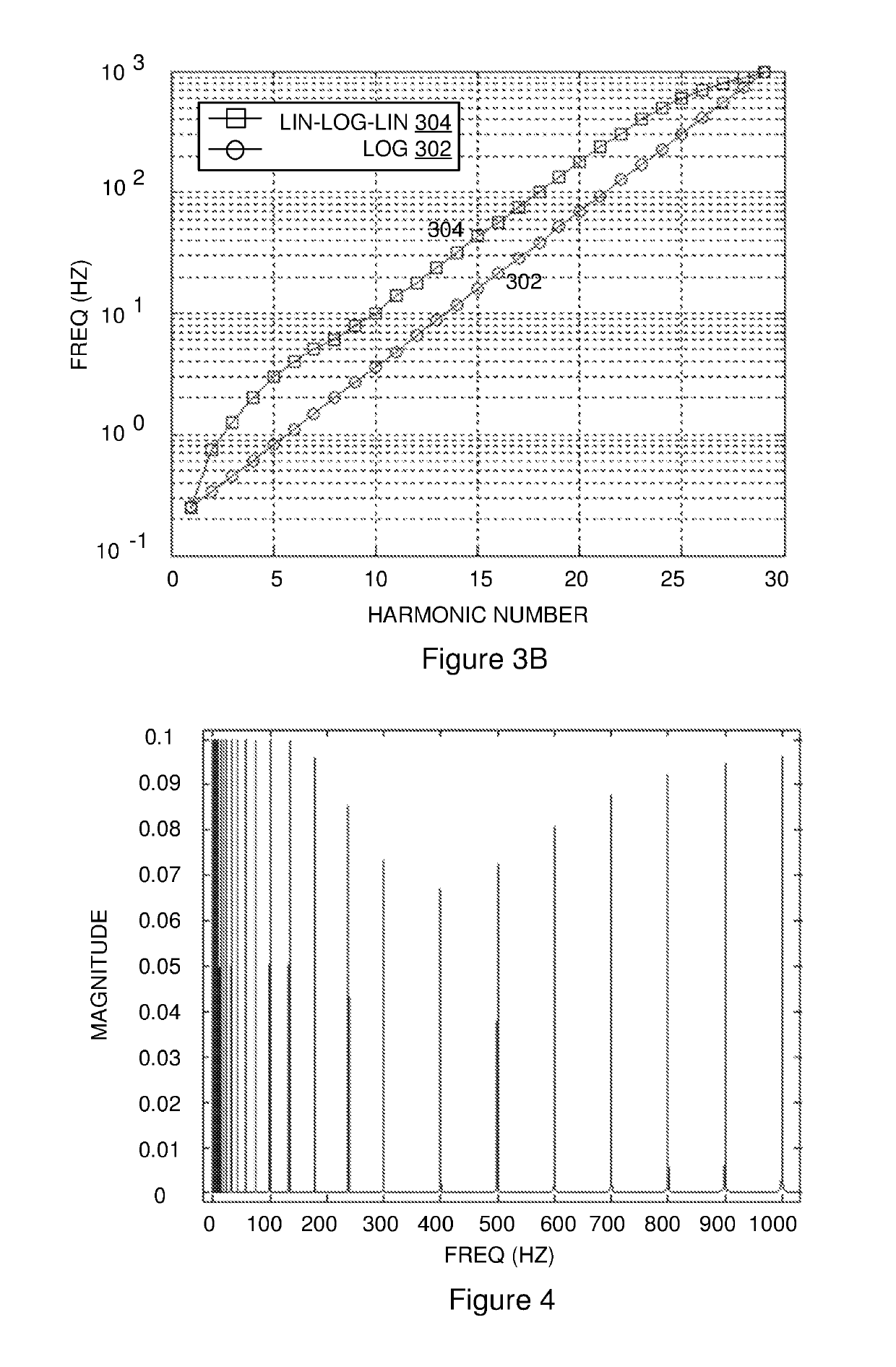Apparatus and method for determining the condition of an electricity-producing cell
a technology of electricity-producing cells and apparatus, which is applied in the direction of electrochemical generators, instruments, transportation hydrogen technology, etc., can solve the problems of severe performance loss, fuel starvation, and the number of operational problems, and achieve the effect of reducing the crest factor of broadband signals
- Summary
- Abstract
- Description
- Claims
- Application Information
AI Technical Summary
Problems solved by technology
Method used
Image
Examples
experiment 1
[0080]Drying was performed by running the fuel cell at a low current density for a predetermined period of time to minimize water production in the cathode. The humidification was lowered by dropping the temperature of the humidifiers below that of the fuel cell.
[0081]FIG. 6A shows polarization curves for three different relative humidity conditions—100%, 78% and 65%. The loss of membrane conductivity on performance is evident which increases the Ohmic losses of the cell. FIG. 6B shows the experimental Nyquist plots obtained at each of these three conditions (“Healthy” being 100%, “Low Drying” being 78% and “High Drying” being 65%) using a conventional frequency response analyser (FRA) EIS technique, and also using the technique described in this application, which in the diagrams is labelled OBIS—“Optimized Broadband Impedance Spectroscopy”. The FRA EIS required about 5 min to complete each measurement cycle compared to 4 seconds for the OBIS system. The results indicate very good ...
experiment 2
[0082]Flooding was performed by increasing the humidifier temperatures to above that of the fuel cell thereby running a relative humidity of well above 100%. FIG. 7A shows polarization curves for two different relative humidity conditions—100% and 130%. Higher degrees of flooding were found to result in unstable measurements and could not produce proper curves. FIG. 7B shows the experimental Nyquist plots using the conventional FRA EIS technique, and using the OBIS technique of this application. The results for relative humidity at 130% are shown at different current densities of 200 mA / cm2, 300 mA / cm2 and 400 mA / cm2. The results are in very good agreement taking into account the small variation caused by water generation in the time between each pair of measurements. Again, while the FRA EIS technique takes around 5 min to complete each measurement, the OBIS technique requires only 4 seconds.
experiment 3
Linear Flooding Conditions
[0083]To demonstrate the ability of the system to perform under extreme non-linear conditions, the fuel cell was run until droplet formation in the flow fields was severely accelerated. For this condition, polarization curves and EIS could not be recorded as the system was unable to reach steady state for a long enough period of time to acquire viable data. The current density was increased to 720 mA / cm2 to enforce internal water production while the gas transfer line temperature was lowered to 60° C. to enforce condensation. The voltage profile during this test and the OBIS signal injection is presented in FIG. 8A. The non-linear behaviour of the flooding is evident and indicated in the profile.
[0084]The OBIS signal is introduced at the 10s mark where the cell voltage was close to the initial steady state value. The time duration of the measurement was 4 seconds and is indicated in the voltage profile. It is clear that long measurement times to acquire the...
PUM
| Property | Measurement | Unit |
|---|---|---|
| frequency | aaaaa | aaaaa |
| frequency | aaaaa | aaaaa |
| frequency | aaaaa | aaaaa |
Abstract
Description
Claims
Application Information
 Login to View More
Login to View More - R&D
- Intellectual Property
- Life Sciences
- Materials
- Tech Scout
- Unparalleled Data Quality
- Higher Quality Content
- 60% Fewer Hallucinations
Browse by: Latest US Patents, China's latest patents, Technical Efficacy Thesaurus, Application Domain, Technology Topic, Popular Technical Reports.
© 2025 PatSnap. All rights reserved.Legal|Privacy policy|Modern Slavery Act Transparency Statement|Sitemap|About US| Contact US: help@patsnap.com



